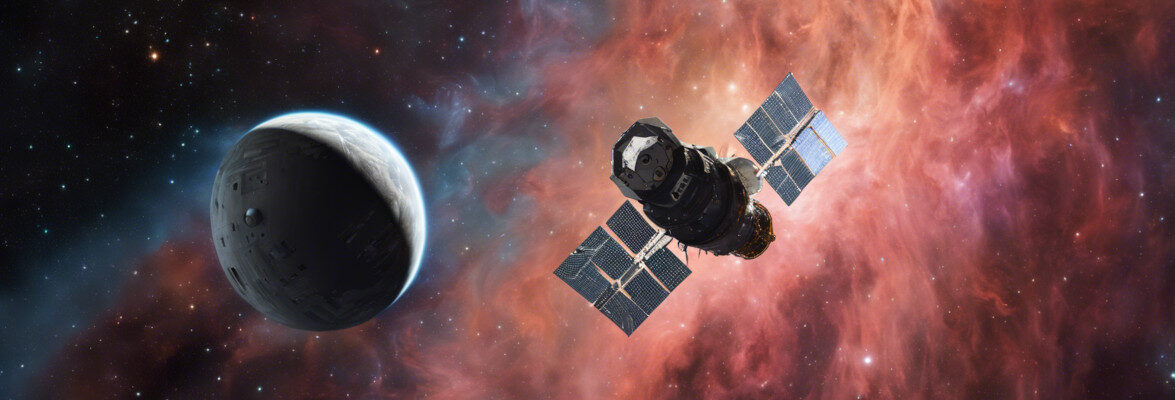
An article published in “The Astronomical Journal” reports the discovery of three planets that orbit the star L 98-59, a red dwarf about 35 light-years from Earth. A team of researchers led by Veselin Kostov of NASA’s Goddard Space Flight Center used observations from the TESS space telescope to discover the traces of the three exoplanets. The analysis showed that these are two possible super-Earths and the smallest planet discovered so far thanks to TESS, about 80% of the Earth. The three exoplanets are too close to their star to be in their system’s habitable zone, instead they are in the area called “Venus zone”, where a planet’s atmosphere can heat up in a runaway greenhouse effect.
The TESS (Transiting Exoplanet Survey Satellite) space telescope, launched on April 18, 2018, has already started providing results for rocky planets as well with the discovery of the exoplanet HD 21749c announced in April 2019. In that case the star that hosts it was a K-class, slightly smaller than the Sun, but the most common stars are the much smaller red dwarfs, which in recent years have become the subject of various studies. L 98-59 belongs to that class, with a mass that is about one third of the Sun’s and a temperature on the surface of about 3,500 Kelvin against the 6,000 of the Sun.
In the star system L 98-59 the TESS space telescope found 3 exoplanets that could all be rocky: L 98-59b is the smallest, about 80% of the Earth, L 98-59c and L 98-59d are respectively 1.4 and 1.6 times larger than the Earth. The image (NASA’s Goddard Space Flight Center) shows an artistic representation of the three exoplanets with their size compared to those of Mars and the Earth.
The nature of the largest exoplanet isn’t entirely certain as it could be a mini-Neptune. Another team of researchers submitted an article to the journal “Astronomy & Astrophysics” in which the masses of the three exoplanets are estimated using the HARPS spectrograph. A maximum limit was obtained for the mass of L 98-59b of 95% of the Earth’s, the mass of L 98-59c was estimated at 2.26 ± 0.50 of the Earth’s while the mass of 98-59d was estimated at 2.46 ± 0.31 of the Earth’s. This estimate suggests that the three exoplanets are all rocky.
These exoplanets are very close to their star so their year lasts 2.25 Earth days for L 98-59b, 3.7 for L 98-59c and 7.5 for L 98-59d. The star is small and cold but those exoplanets are close enough to receive from it respectively 22, 11 and 4 times the energy that the Earth receives from the Sun. In essence, they’re too close to their star to be in the their system’s habitable zone.
In September 2014 an article published in the journal “The Astrophysical Journal Letters” reported a discussion concerning the possible exoplanets similar to Venus offering a definition of what the authors called Venus zone in which an exoplanet is more likely to be similar to Venus than to the Earth. At the time, the researchers used data collected by NASA’s Kepler space telescope, TESS’s predecessor and an extraordinary planet hunter, whose mission is now ended. The three authors of that research – Stephen R. Kane, Ravi Kumar Kopparapu and Shawn D. Domagal-Goldman – were also part of the team that examined the observations of the star system L 98-59 and its three planets fall within the area of Venus.
It’s possible that the rocky planets of the star system L 98-59 – whether two or three – have an atmosphere that initially had a composition similar to the Earth’s and that then a runaway greenhouse has turned them into hell like the planet Venus. For this reason, even if these planets can’t host life forms similar to the Earth’s ones, they’re still interesting. Astrophysicist Joshua Schlieder of the Goddard Space Flight Center, one of the authors of this research, explained that there are still many questions regarding the reasons why the Earth has become habitable and Venus is not. If there were observers in the L 98-59 system, they would see Earth and Venus as two almost identical planets and their distance from the Sun is only part of the difference.
The L 98-59 star system will still be observed by the TESS space telescope and the new data will improve our knowledge of the three exoplanets discovered and perhaps even reveal others. However, to study those exoplanets’ atmospheres, if they have any, other instruments are needed, also waiting for the James Webb space telescope to be launched at last. The L 98-59 system is a good candidate for that kind of observations since it’s relatively close so the star is relatively bright and the three planets discovered are interesting.


Permalink